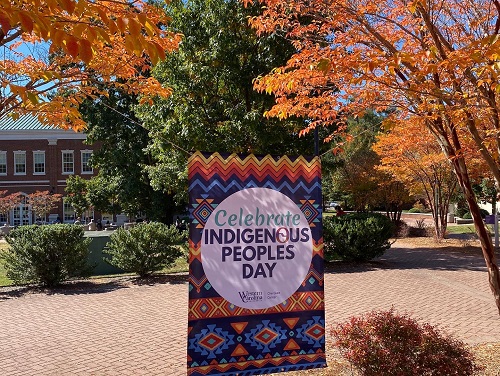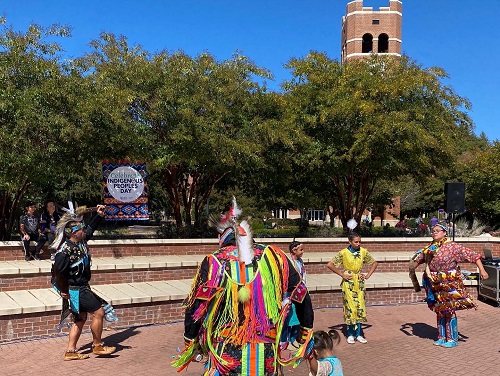
There has been a slow cultural shift since the late 1970s to celebrate Indigenous Peoples Day on the second Monday in October, a day that has usually been reserved for Columbus Day. This cultural shift has been to recognize the sovereignty of Indigenous people around the world, as well as recognize the 500-plus years of Indigenous erasure that has plagued the United States since Columbus arrived in the Bahamas in 1492.
The 2022 Indigenous Peoples Day fell on Oct. 10. To recognize Indigenous Peoples Day, WCU partnered with the Eastern Band of Cherokee (EBCI) to hold a celebration of Indigenous people and cultures at the WCU fountain.
Andrew Denson, history professor and Director of Cherokee Studies at WCU, said the shift to Indigenous Peoples Day came as a counter to Columbus Day. Many proponents of Indigenous Peoples Day believe that Columbus Day celebrates 500-plus years of genocide, attempted culture erasure, and forced assimilation.
Sky Sampson, Director of the WCU Cherokee Center, organized the fountain event to highlight and educate about various aspects of Indigenous culture, including arts and crafts, food, dress, utilities, and dances.

The Indigenous Peoples Day Celebration included Indigenous vendors, the WCU Cherokee Studies Program, and cultural demonstrations.
Sampson said EBCI normally holds this event in November in honor of Native American Heritage Month and show that Indigenous people are still alive and thriving, despite the erasure attempts.
Sampson said many people tend to think of Indigenous people as a thing of the past, largely influenced by Western media like old cowboy movies. Sampson wants people to participate in events like these to learn about Indigenous culture. She encourages people to get out of their comfort zones and to not be afraid to ask questions and learn.
Another important part of cultural celebrations is that people from majority groups can get educated in ways that minority groups have been treated throughout history. Sampson said there’s room for growth for everyone.
In 1977, a United Nations convention in Geneva, Switzerland allowed the first Indigenous representatives, who detailed the rights violations they endure, including removal from and destruction of Indigenous land. There was a motion at that convention to observe the day of “discovery” in the Americas as an international day of solidarity with America’s Indigenous groups.
In 1992, the Berkeley Resistance 500 Task Force presented the historical facts of Columbus’ “discovery” of inhabited land, including capturing Taino Indigenous people and selling them into slavery, to the city of Berkeley in advance of a “Quincentenary Jubilee” to commemorate the 500-year-anniversary of Columbus landing in the Americas. The Berkeley City Council voted unanimously to celebrate Oct. 12 as Indigenous Peoples Day.
In 2021, President Biden became the first U.S. president to recognize Indigenous Peoples Day, saying it is a priority for his administration to respect Tribal sovereignty and self-governance. Biden also said the federal government has an obligation to invest in Indigenous peoples given federal policies have long attempted to forcibly assimilate and erase Indigenous culture.
Campus resources for Indigenous students and those interested in the culture include the exhibits at the Mountain Heritage Center and Bardo, Cherokee Studies, and the Cherokee Center. The Mountain Heritage Center currently has an exhibit about Indigenous assimilation and boarding schools. Bardo has an installment called “We Will Not Be Silenced” that stands for missing and murdered Indigenous women.






